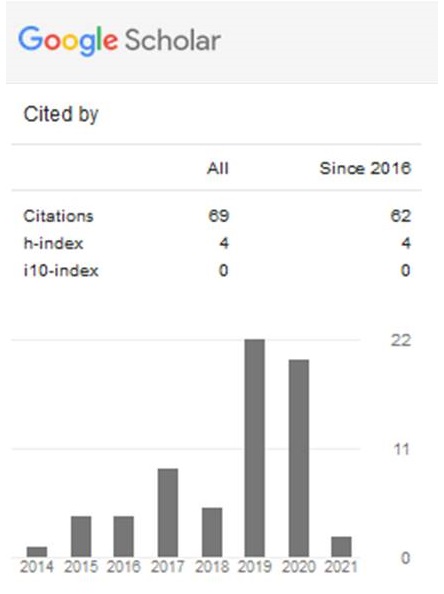Studi Beberapa Sifat Fisik Dan Kimia Tanah Gambut Pada Hutan Rawa Gambut Dan Perkebunan Kelapa Sawit
Abstract
Keywords
Full Text:
PDF (Bahasa Indonesia)References
Aristio, A., Wardati, dan Wawan. 2017. Sifat Kimia tanah dan pertumbuhan tanaman karet (Havca brasiliensis Muell. Arg) pada tanah gambut yang ditumbuhi dan tidak ditumbuhi Mucuna bracteata. JOM Faperta Universitas Riau 4(1): 7-12.
Brown, T.T., R.T. Koening, D.R. Huggins, J.B. Harsh, R.E. Rossi. 2007. Lime Effect on Soil in direct-seeded croping system. Soil Sci. Soc. Am. J.72:634-640.
Hakim, N., N. Y. Nyakpa, S. Lubis., G. Nugroho, R. Saul. M.H. Diha., Go Ban Hong, dan
H.H. Baley. 1986. Dasar-Dasar Ilmu Tanah. Lampung University Press. Lampung. Handayani, D. 2005. Karakteristik Gambut Tropika : Tingkat Dekomposisi Gambut,
Distribusi Ukuran Pertikel, dan Kandungan Karbon. Tesis. Sekolah Pascasarjana Institut Pertanian Bogor. Bogor.
Jeong, C.Y., C.W.Park, J. G. Kim, S. K. Lim. 2005. Carboxylic content of humic acid determined by modeling calcium acetate. Dan precipitation methods, Soil Sci. Soc. AM. J. 71: 86-94.
Limin, S.H., Tampung N. Saman., Patricia E. Putir., Untung Darung., dan Layuniyati. 2000. Konsep Pemanfaatan Hutan Rawa Gambut di Kalimantan Tengah. Istano barito Banjarmasin. Kalimantan Selatan.
Radjagukguk, B. 2000. Perubahan Sifat-Sifat Fisik dan Kimia Lahan Gambut untuk Pertanian. Dalam : Jurnal Ilmu Tanah dan Lingkungan. Vol. 2 No.1 Yogyakarta.
Sembiring, S. 2008. Sifat Kimia dan Fisik Tanah pada Areal Bekas Tambang Bauksit di Pulau Bintan Kepulauan Riau. Jurnal Kehutanan 5(2) : 123-134
Siregar, N., Sumono, A. Dan Munir, A.P. 2013. Kajian Permeabilitas Beberapa Jenis tanah di Lahan Percobaan Kwala Berkala USU Melalui Uji Laboratorium dan Lapangan. Jurnal Rekayasa Pangan dan Pertanian 1(4): 138 - 143.
Suprayogo, D., Widianto,P. Purnomosidi, R. H. Widodo, F. Rusiana, Z. Aini, N. Khasanah, dan Z. Kusuma. 2004. Degradasi Sifat Fisik Tanah Akibat Alih Guna Laha Hutan Menjadi Sistem Kopi Monokultur. Kajian Perubahan Makroporositas Tanah. World Agroforestry Centre ICRAF Asia. Bogor.
Refbacks
- There are currently no refbacks.

_2017.jpg)



